Human Bones from Roccarainola
Overview
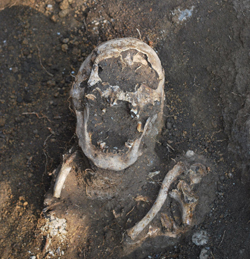
So far, the collection of bones from Roccarainola consists of a minimum number of 51 individuals recovered from various locations across the site. While the results of the Summer 2012 study season are only basic in scope, they are fascinating to say the least. Among the pathological and non-metric observations made thus far are numerous cranial depression fractures
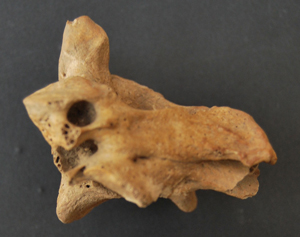
A Closer Look at Specific Tombs
In front of the western entrance leading to the main body of the church structure, there exists a roughly square area delineated by low walls. This area contained two burials, designated as Tomb 5 and Tomb 6. Both tombs consisted of disarticulated and incomplete skeletal remains. Tomb 5 held the incomplete remains of an individual of indeterminate sex, aged to about 45 years. By analyzing the curvature of the sacrum it was determined that the individual suffered from scoliosis. Meanwhile, in the same area, Tomb 6 also consisted of 1 individual, this one being a very robust male, aged between 30 and 40.
A third burial, Tomb 4, was discovered along the eastern boundary of this same area, the walls of which were assembled from tufa slabs and likely once had bricks covering it. The remains of at least 13 individuals were found in this tomb. Owing to the disarticulated and incomplete nature of the skeletons, it is likely that the bones were moved from their primary deposit at some point in time. Amongst these bones, the remains of another male of incredible robusticity and stature were identified. At least 3 juveniles were also found within Tomb 4.
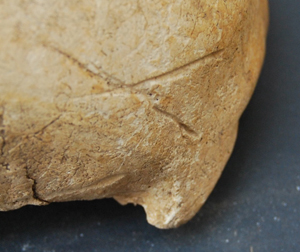
To the east of the main structure, a small pit --the Pozzetto-- was found to be filled with the incomplete skeletal remains of at least 32 individuals. This area had been excavated by a different group of archaeologists back in 2005. Amongst the remains of these individuals was a cranium with a peculiar “X” incised on the right frontal bone peri or post mortem, as well as a healed depression fracture. Numerous cranial fragments were found to be exceptionally thick, and affected by various traumas. Amongst the remains was a mandible showing possible signs of tuberculosis.
Possible Cut Human Bones
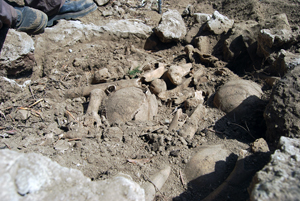
Evidence of Fluorosis
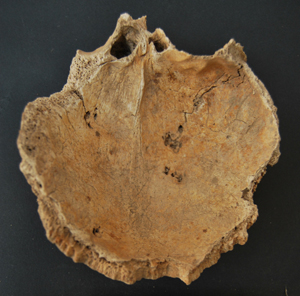
Another area of investigation involves the unusual cortical thickness and extra bone growths apparent in the bones of many members of this population. We hope to establish a definitive link between this and the high concentrations of fluoride in local water sources by taking into account recent research showing that volcanic activity can contaminate water and food with high levels of fluoride. Additionally, the roles of occupational stress, temperature and evaporation rates will also be considered.
